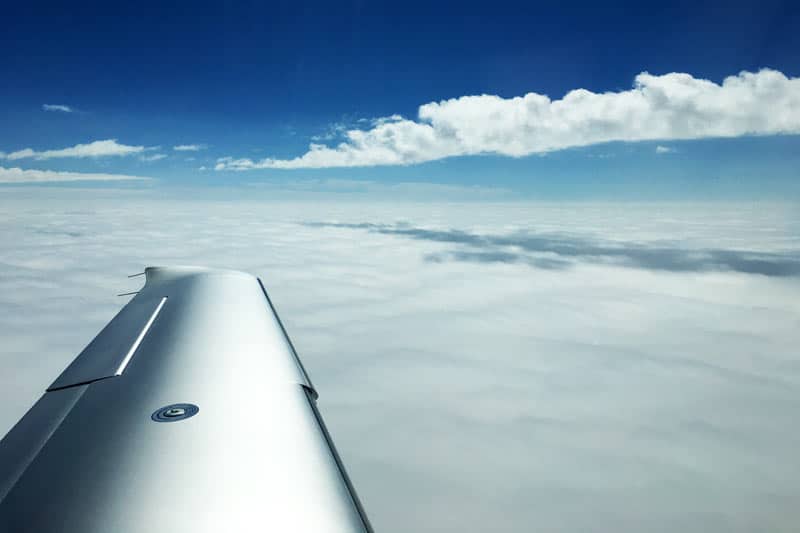Introduction
Flying can be an exhilarating experience, offering a bird’s-eye view of the world below. However, for many, the mention of turbulence can transform excitement into anxiety. Understanding what turbulence is and how to handle it can significantly enhance your flying experience. So, let’s delve into what you should do when a plane is turbulent.
Table of Contents
What is Turbulence?
- Definition of Turbulence
Turbulence is essentially the irregular movement of air, causing the aircraft to experience sudden and unpredictable motion. It can feel like a bumpy ride on a road, but in the sky.
- Causes of Turbulence
Turbulence can be caused by various factors including atmospheric pressure, jet streams, mountain waves, weather fronts, and even thunderstorms. Each of these factors disrupts the smooth flow of air, leading to the turbulence we experience during flights.
- Types of Turbulence
There are several types of turbulence, such as clear air turbulence, thermal turbulence, mechanical turbulence, and wake turbulence. Each type has different causes but can affect the flight similarly.
How Pilots Handle Turbulence
- Training and Experience of Pilots
Pilots undergo rigorous training to handle turbulence. They are well-versed in managing various in-flight situations, ensuring passenger safety.
- Use of Technology and Instruments
Modern aircraft are equipped with advanced technology and instruments that help pilots detect and navigate through turbulence. Tools like weather radar and turbulence detection systems are invaluable in ensuring a smoother flight.
- Communication with Air Traffic Control
Pilots maintain constant communication with air traffic control to get real-time updates on weather conditions and turbulence reports, allowing them to make informed decisions.
What Passengers Experience
- Physical Sensations During Turbulence
During turbulence, passengers might feel the aircraft shaking or dropping slightly. This sensation can range from mild to moderate and is usually brief.
- Emotional Reactions and Anxiety
It’s natural to feel anxious during turbulence. The uncertainty and sudden movements can trigger fear, but understanding that turbulence is a normal part of flying can help alleviate some of this anxiety.
Safety Measures for Passengers
- Buckling Up
Always keep your seatbelt fastened when seated, as turbulence can occur unexpectedly. This simple measure can prevent injuries during sudden jolts.
- Securing Personal Items
Ensure that your items are securely stowed away. Loose items can become hazards during turbulence.
- Following Crew Instructions
Flight attendants are trained to handle turbulence and will provide necessary instructions. Always listen to and follow their guidance to stay safe.
Techniques to Stay Calm
- Breathing Exercises
Practice deep breathing exercises to help calm your nerves. Inhale slowly through your nose, hold for a few seconds, and exhale through your mouth.
- Visualization Techniques
Imagine yourself in a peaceful and serene place. Visualization can distract your mind from the turbulence and reduce anxiety.
- Listening to Calming Music or Podcasts
Music and podcasts can be great distractions. Choose something calming to help keep your mind off the turbulence.
Understanding the Aircraft’s Design
- Engineering and Safety Features
Aircraft are designed with advanced engineering to withstand turbulence. The flexible wings and robust structure ensure that the plane can handle various air conditions safely.
- How Planes Are Built to Withstand Turbulence
Planes undergo rigorous testing to ensure they can endure the stresses of turbulence. Engineers consider numerous safety factors to make air travel as safe as possible.
Myths and Facts About Turbulence
- Common Myths Debunked
A common myth is that turbulence can cause a plane to crash. In reality, modern aircraft are built to handle even severe turbulence without compromising safety.
- Facts to Reassure Passengers
Understanding that pilots and aircraft are well-prepared for turbulence can help reassure passengers. Turbulence is a normal part of flying and rarely poses a danger.
Turbulence and Modern Aviation
- Advances in Technology
Technology has significantly improved how turbulence is managed. Modern aircraft have sophisticated systems that detect turbulence early, allowing pilots to take preemptive measures.
- Improved Forecasting and Detection
Weather forecasting has become more accurate, helping pilots plan routes that avoid areas with expected turbulence. This proactive approach enhances flight safety and comfort.
Impact of Weather on Turbulence
- Weather Patterns Contributing to Turbulence
Weather patterns like thunderstorms, jet streams, and cold fronts can cause turbulence. Pilots use weather data to navigate through or around these areas.
- How Pilots Navigate Through Weather
Pilots adjust their altitude and route based on weather conditions. They aim to find the smoothest possible flight path to minimize turbulence.
Passenger Rights During Turbulence
- What to Expect from Airlines
Airlines have protocols to ensure passenger safety during turbulence. This includes clear communication from the crew and proper handling of any turbulence-related incidents.
- Reporting Severe Turbulence Experiences
If you experience severe turbulence, you can report it to the airline. Feedback helps airlines improve their services and safety measures.
Frequent Flyer Tips
- Advice from Seasoned Travelers
Frequent flyers recommend choosing seats over the wings for a smoother ride and staying informed about the flight path and weather conditions.
- Preferred Seating Choices
Seats closer to the center of the plane, particularly over the wings, tend to experience less turbulence compared to those at the front or rear.
Health Considerations
- Managing Motion Sickness
If you’re prone to motion sickness, consider taking preventive measures like medication, staying hydrated, and focusing on a fixed point in the distance.
- Staying Hydrated and Well-Nourished
Drink plenty of water and eat light meals before and during the flight. Dehydration and heavy meals can exacerbate the effects of turbulence.
Children and Turbulence
- Helping Children Cope
Explain to children what turbulence is and reassure them that it’s normal. Keep them occupied with activities to distract them.
- Engaging Activities to Distract Them
Bring along favorite toys, books, or games to keep children entertained and distracted during turbulent moments.
Conclusion
Flying doesn’t have to be a nerve-wracking experience, even when turbulence hits. By understanding what causes turbulence, how pilots handle it, and what you can do to stay safe and calm, you can turn a potentially stressful situation into just another part of your journey. Remember, turbulence is a normal and manageable aspect of air travel, and with these tips, you’ll be better prepared to handle it.
FAQs
What should I do if I’m scared of turbulence?
Take deep breaths, use visualization techniques, and listen to calming music or podcasts. Remind yourself that turbulence is a common and safe part of flying.
Can turbulence cause a plane crash?
No, turbulence is highly unlikely to cause a plane crash. Modern aircraft are designed to handle even severe turbulence, and pilots are trained to navigate through it safely.
Is turbulence worse on certain routes?
Turbulence can vary depending on the route and weather conditions. Routes over mountainous areas or regions with frequent storms may experience more turbulence.
How can I prepare for a flight with expected turbulence?
Stay hydrated, avoid heavy meals, choose a seat over the wings, and practice relaxation techniques. Being prepared can help you stay calm during turbulence.












